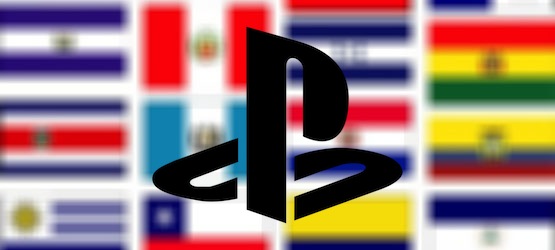When it comes to gaming, the industry centers on three markets: Japan, Europe and the US. Whether it is sales, prices, big announcements or any future plans, these three regions are always the main focus for publishers and console makers alike, including Sony. There is a good reason for this – these regions make up the vast majority of the gaming market while also being home to most of the game development talent.
In the past few years, though, the importance of South America for the gaming industry has increased, and games and consoles that usually took months to reach here are now available within mere days, or weeks after release at most.
Still, even with this improved retail presence, console makers have found it extremely hard to crack the market south of the continent. Sony and the PlayStation are at the forefront of this fight though, implementing a few measures that I’ll talk about later on. However, with Peru (my country) and the rest of South America, things might be a lot more complicated than Sony (and any other console manufacturer for that matter) might have initially thought they would be.
Let’s take a look at the four main obstacles the PlayStation maker needs to understand and address if it wants to have any chance of being as big here as it is in the rest of the major gaming regions in the world.
Pricing
Despite common belief, price is not the first (that place belongs to piracy), but the second most problematic of the barriers Sony has to face in both Peru and the rest of South America, a territory with countries in which the average monthly salaries range between US$500-700.
If, in the US and other regions, gamers (and all gadget lovers for that matter) usually complain about the high prices of the PS Vita and of some of both PS3 and Vita games in general, they should see the prices for these in Peru and its surrounding neighbors. In fact, when I sit down and consider all the money I have spent on my PS3, my Vita and their games, I realize that I could have easily afforded two current gen consoles and handhelds plus a lot more games had I bought them anywhere in Europe or the US.
Here are the current prices (in US dollars with their equivalents in local currency) that authorized resellers list the PS3, the PS Vita and most games for in Peru (which are not too different from the ones in other countries of South America):
- PS3 (160 GB): $500 (S/.1300)
- PS Vita: $460 (S/.1200)
- PS3 Games (Latest releases): $106 (S/.220)
- PS Vita Games (Latest releases): $65 (S/.169)
Even the prices for these in the black market (more on that later) are quite high:
- PS3 (160 GB): $385 (S/.1000)
- PS Vita: $308 (S/. 800)
- PS3 Games (Latest releases): $70 (S/.180)
- PS Vita Games (Latest releases): $57 (S/.150)
Some of you might be thinking: PlayStation hardware and software might be expensive over there, but surely there must be a series of different bundles and deals that you could take advantage of, right?
Well, here we run into another problem, which is that no matter which retailer you buy a bundle from, they always charge extra for bundles that usually cost just the price of the hardware in other regions.
So, why are video games so expensive here? There are two main factors that come into play:
- Taxes for video games (which are considered luxury items here, along with electronics in general) are very high. This is something that is hard to argue against, considering that the YTD amount that is owed in taxes by informal video game retailers is about $2.7 M (S/.7 million).
- Also, knowing that only a few people can afford them, retailers import consoles and video games in small amounts and sell them at even higher prices to justify their investments.
But, is there really a market for video games in Peru and South America? Hard figures are not easy to come by, but I believe it is no coincidence that the PS2 is still relevant and selling so well here and in countries like Brazil. For reference, a PS2 console here usually costs between $200 and $220 (S/. 500), while its games are around $15-25 (S/. 50).
As you see, pricing issues for video games in the region are complex at best and don’t depend entirely on Sony.
Communication Issues
Whether you are a fan of Sony and the PlayStation family or an advocate for other consoles or companies, there is no denying that Sony has done marvels with the PSN Store and with its PS Plus offerings.
However, not a single one of my friends with a PS3 or a PS Vita knew what a PS Plus membership offers. In fact, when I told them how they could benefit from the PSN Store (Day 1 Digital releases at US prices) or by becoming PS Plus members (several free games per year), most of them immediately created US PSN accounts – a native PSN Store for Peru is planned to debut on late 2013.
Curiously enough, all of them had seen Sony’s weird ads for the PlayStation on local TV, which clearly shows that there is a communication problem between Sony and its users here. Just take a look at a couple of these ads (embedded below) and judge for yourself. If that is not a wasted opportunity, I don’t know what it is.
[springboard type=”video” id=”688105″ player=”play020″ width=”470″ height=”284″ ]
[springboard type=”video” id=”688107″ player=”play020″ width=”470″ height=”284″ ]
The main issue here is that the gaming community in Peru, and in other countries in the region, is not as tech-savvy as it is in the US, Europe and Japan. Most of those who buy a PlayStation console here, do so for playing the latest PES or FIFA with their friends and to watch Blu-ray movies. So, if Sony is to capitalize from this audience, they need to come up with more “in your face” ads that show what the benefits of their consoles and services are in a clear and straightforward way.
Piracy
You knew we were coming to this issue sooner or later right? Piracy in the gaming industry is a problem that everyone seems to acknowledge in some way or another, yet people both for and against it usually fall into one of these categories when choosing their arguments:
- People pirate games because they can’t get them in any other way.
- Pirating games might not be that harmful, since the people who pirate them could have never afforded them anyway.
- Publishers use tactics that are too controlling, like DRM and always-online games.
- You have a game that your current console will not play unless hacked.
..and so on
These reasons have been discussed both on the site and elsewhere on the web to no end. There will always be a debate about piracy. But let me tell you something there is no debate about: Video game piracy in Peru and in other countries of the region is not only rampant, it is a way of life for the vast majority of the region’s society members.
Let me explain further: There is an attitude/way of thinking in this country and in many other countries of South America that goes: “The smart one always wins” or “take advantage of everything”. Having lived in a city of Florida for many years, I have to admit (with no lack of shame) that I was always a bit surprised by the fact that people in the US and other countries (mostly) abide by the rules with so much dedication and respect. In comparison, it’s as if they never steal, return things that others lost, and don’t skip lines at the bank and so on.
It’s such a contrast with the way people think and behave here. Don’t get me wrong, there are a ton of great people in this country and in all of South America. But when it comes down to everyday business and dealing with your hard earned cash, the mentality of most is to take advantage of whatever you can at any cost. This might sound way too drastic and overly-dramatic for some, I know, but things need to be called as they are.
And so it is that, while authorized retailers definitely sell some PS3s and Vitas, their sales are nothing compared to the number of consoles and games sold in the black market.
And I don’t mean original copies of games. You see, whenever you buy a PS2, a PS3 or a PSP at the black market, the seller will always offer you an “unlocking” service for an additional fee of $20 or so. Of course, this “unlocking” service allows customers to run any pirated game on their consoles, games which are also sold by these same sellers. For example, you get an “unlocked” PS3 or PSP from any of these sellers, and they will charge you about $4 (S/. 10) for a big budget console game (e.g. Final Fantasy XIII and Uncharted) or the same amount for a series of small games to have them transferred to your new console. Pay them a bit more and they’ll even show you how to use torrent clients for you to download the games yourself. Currently unhackable devices, like the Vita, are sold, but obviously aren’t as popular – and the price will likely rise $100 once it is inevitably hacked.
But what if you can’t afford a console? No problem! There are countless businesses called game cabins here that you can use to play your favorite games. These game cabins are huge rooms (sometimes entire building floors) where you can find several hundreds of TVs, each hooked up to a video game console which you can rent by the hour. You can’t afford a console but you want to play a couple of matches in PES? No problem. You want a snack and a soda while you play? Absolutely! These businesses offer all of that and more.
Needless to say, not only is this illegal, but the consoles the owners use, and the games those consoles run, are all hacked and pirated respectively, which takes the concept of “sharing” to a whole new level. Hell, the most interesting soccer matches even have audiences!
Whenever I see this, I can’t help but wonder if these deluded people who work their asses off to hack consoles for the sake of their petty prides know the true extent of their actions. And, by the way, I have yet to see a single person in my known universe who uses a hacked console for running actual homebrew on it.
Naturally, after reading all this, you must be wondering why these people are allowed to run these businesses in the first place.
Which brings me to my next (and last) point.
Black Market
When it comes to gaming (and everything else for that matter) my philosophy is: If I can’t afford it, I simply don’t get it. However (as hard as this might be to understand for some), this isn’t the way some people in the region think. In fact, ask anyone that you want that has lived in South America or search the web all you wish and you will find that, strangely as it seems, the way of life here has made it almost ok for piracy to exist. And, if pirated games, films and music are allowed to be, there will be those who sell them.
In a market where the average income earner has to go through great extents to afford a PS3, most will not even think about spending a tenth of their salaries on top of that on an original game if they can avoid it.
It is necessary to understand this mentality to see how the black market can exist so openly in South American countries: Instead of being seen as criminals, those who sell (and buy) pirated goods are seen as people who have no choice.
Final Thoughts
Despite all of these obstacles, though, there is a market of gamers in South America that is willing to pay a fair price for their right to enjoy a virtual adventure, score a perfect goal or dwell in a fantasy realm via their PlayStation consoles. Sony knows this, and, thankfully, they are making more efforts than any other console manufacturer to address this market via regional bundles, separate conferences targeted to this region (at E3 no less) and, in the future, possible factories in South America that might make gaming for this part of the continent more affordable.
As for the mindset behind people who prefer not to pay for their games, this is something much more complicated and multilayered, and Sony will have to try to do something about it if it wants the PlayStation to dominate in the South American market, which is made up of almost 600 million people. And, with Sony eyeing the market, none of its competitors can afford to ignore it for much longer.
Essential Reading:








